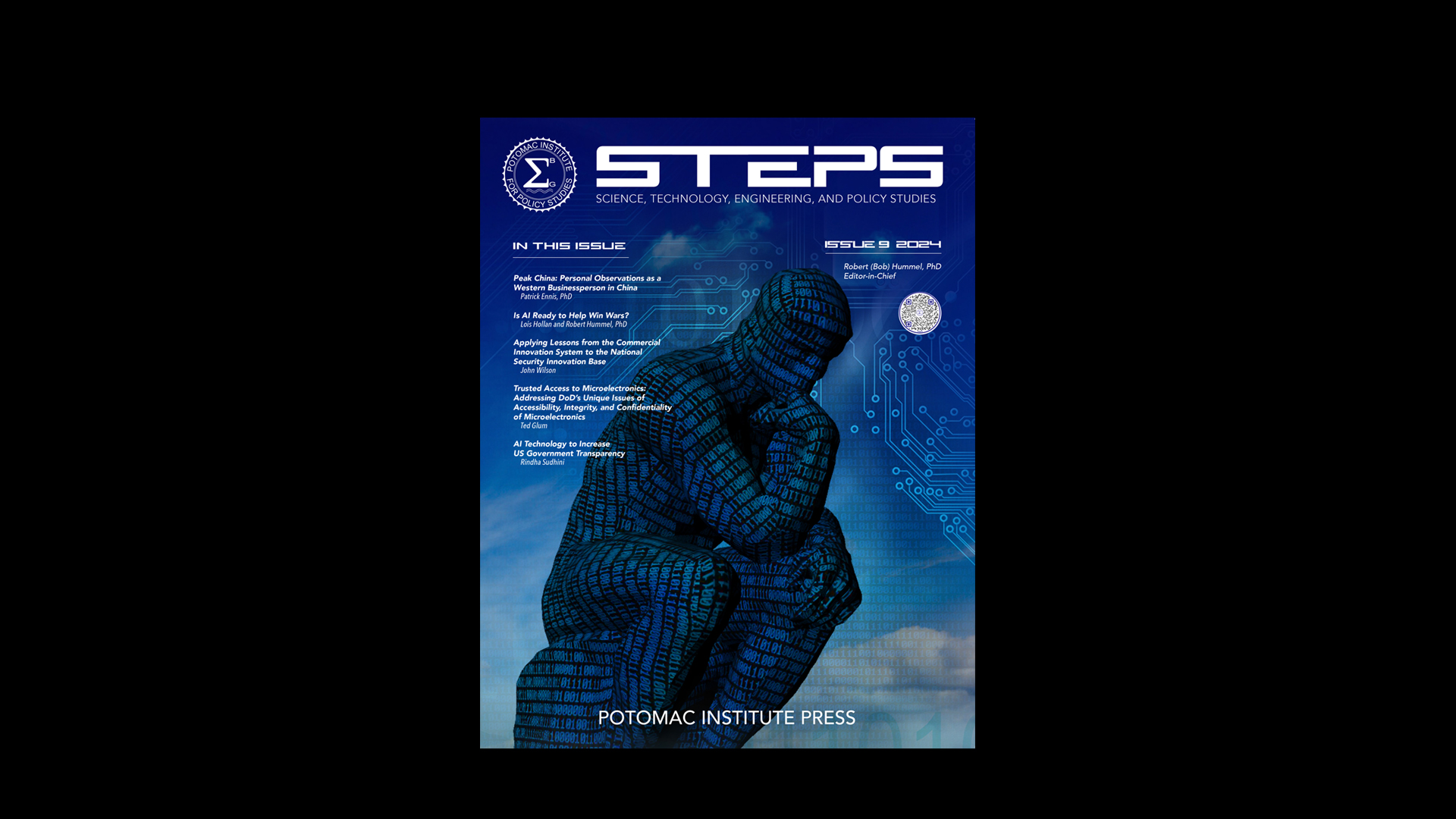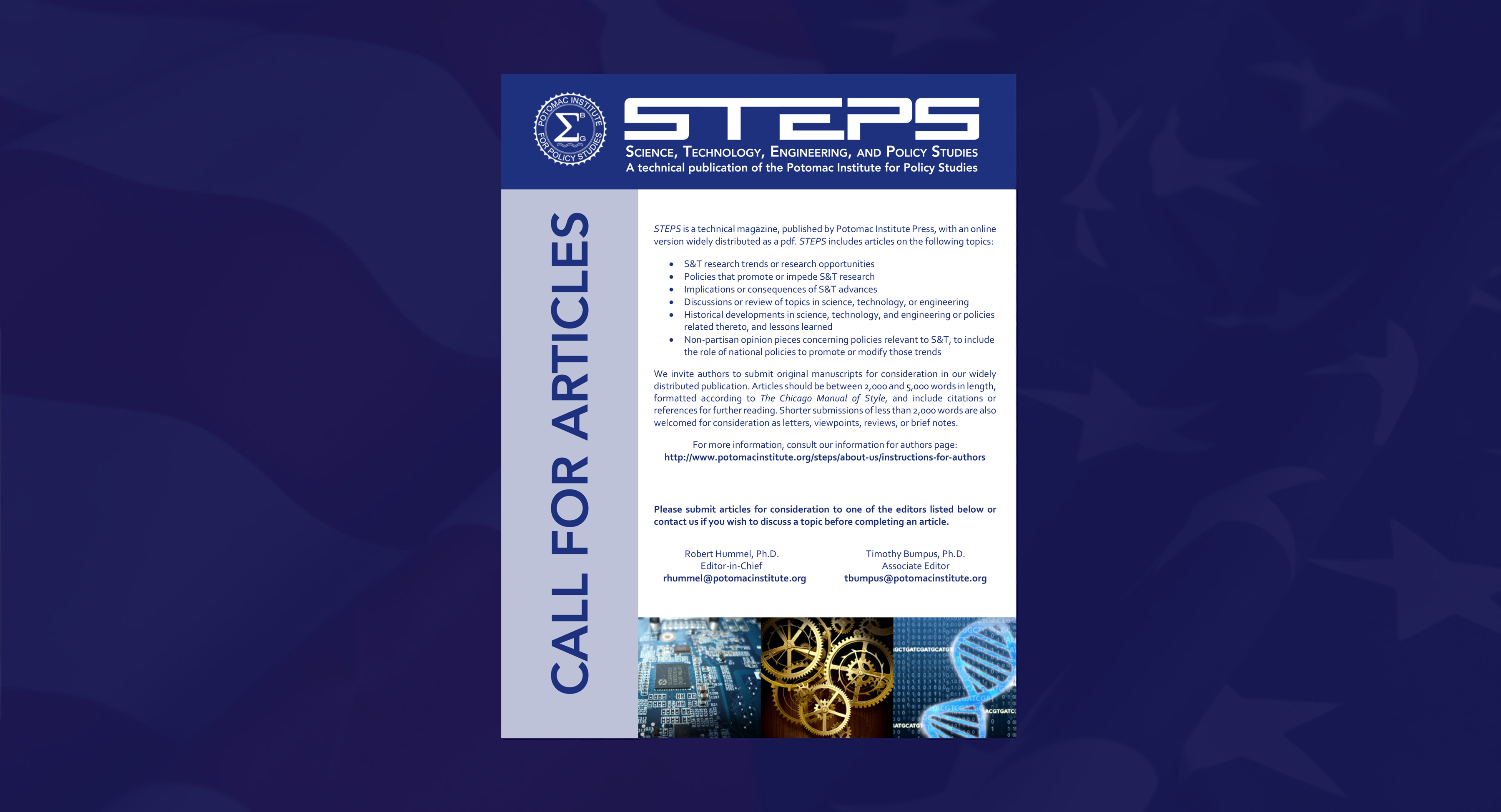The Democratization of Technology and International Conduct
Col. Chuck O'Neill
Email: This email address is being protected from spambots. You need JavaScript enabled to view it.
In the current strategic environment, the United States competes for global leadership across multiple competencies, to include the economic, political, technological, and military sectors. The rapidity of technology distribution or democratization has most recently begun to level the playing field for international actors seeking to compete with and challenge US strategic primacy. Additionally, countries and non-state actors possessing advanced technologies may seek advantages over equally as well-equipped adversaries by playing by different rules or ignoring international norms of moral and ethical conduct.
This paper will briefly review the character of global competition and then summarize the impact of rapid advances in unmanned aerial system or drone technology. A brief discussion of the potential threat of synthetic bioweapons follows. These weapons may produce devastating effects when developed by adversaries who may be willing to use them contrary to established international law.
Competition is a fundamental aspect of international relations and a normal state of relations between political and economic actors.[i] Global competition across the strategic environment is centuries old and not unique to the current era. However, in the Information Age, competition between and among nation states is more distributed, faster, and more impactful on the daily life of human beings worldwide. In addition, non-state actors, be they empowered individuals, multi-national corporations or transnational criminal and terrorist organizations routinely engage in the competition continuum.
As states and non-state actors seek to protect and advance their own interests they will engage in both competition and cooperation where it is to their advantage. In general, states and in some cases non-state actors, compete across economic, military, geo-political, and informational areas but do not necessarily coordinate their efforts into a cohesive long-term plan or strategy.
Conflict is not the same as competition, but both can overlap. Some might argue that the conflict is an extension of, or intensified form of competition. On the other hand, a rational objective of geopolitical and military competition is to pursue national interests while avoiding armed conflict with competing states. Moreover, the military role during competition includes engagement activities with allied and partner nation militaries as well as the development and demonstration of advanced warfighting capabilities, all designed to deter potential adversaries from engaging in malevolent activities.
The rapid global distribution of technology to and by both state and non-state actors has and will continue to arm our competitors with the capability and to a lesser degree the capacity to challenge US national interests. Rapid and continuing advances in a number of areas to include unmanned and autonomous systems and biotechnology will pose challenges to a rules-based international order. Nations and individual actors who do not subscribe to the same ethical standards as the U.S. and its partners and allies can steal a march in competition and conflict without possessing absolute technical superiority or even parity.
Our unprecedented and growing global interconnectedness is both a source of cooperation between nations and a driving force in international competition. The accelerating dispersion of technology presents potential challenges not only to U.S. global leadership in competition but may enable our competitors with at least transitory lethal advantages should competition rise to the level of armed conflict. Two examples follow.
In a July 7 article in Defense One, Zak Kallenborn reported that in the most recent conflict with Hamas, Israel employed the first combat “true drone swarm.” While not particularly sophisticated the swarm involved a small number of drones that located well-hidden targets for indirect fires.[ii] The application was distinct from just simultaneous employment of multiple drones like air-launched decoys or those used against Syrian air defenses in 2019.[iii] In this case, the drones formed an integrated weapons system guided by Artificial Intelligence (AI) to communicate, collaborate, and make collective decisions about where to go and what to do.
Proliferation of technology, accessibility of materials, and ease of manufacture suggest that drones can be in the hands of most persons and groups throughout the world. Innovations like 3D printing will allow the construction of drone swarms by a small number of trained individuals in remote locations. Once launched they are difficult to detect but even if some drones in a swarm are disabled or destroyed future swarms will be able to self-heal, recomposing on the move while maintaining swarm integrity and mission focus.[iv]
Small, large in numbers, guided by AI and internal line of site communications; drone swarms collectively will become hard to defend against, integrated weapons systems. In theory, drone formations could number in the thousands, exceed the capacity of human cognition, and require advanced AI and machine learning to control them. AI controlled drone swarms will be able to conduct multi-axis, multi-domain combined attacks with a variety of on board and off board kinetic and non-kinetic weapons and payloads.
Certainly, the U.S. will compete with China and other competitors in the development of AI, machine learning and their coupling with drone technology and AI. However, there are ethical considerations about the employment of autonomous systems to consider.
Currently our unmanned vehicle operations require a man in the loop or on the loop to conduct kinetic strikes. What will be our response when AI enabled swarms are able to seek out and decide what targets to attack without a human in the kill chain or decision cycle? At what point will we determine that it is to our advantage and ethical to allow the machine to make lethal decisions on its own? If we fail to accelerate the kill chain through machine decision algorithms, will potential adversaries see our hesitancy as an exploitable vulnerability? Will we cede the advantage to adversarial competitors, including proxy forces or terrorists who feel no compunction about allowing autonomous machines make decisions about lethal force? Who, what and when to kill? Given the opportunity, near peer or peer competitors, to include Russia and China will embrace this potential advantage.
Perhaps more insidious than the coupling of AI with drone technology are developments in biotechnology that present strategic and ethical challenges. In the June issue of the U.S. Naval Institute Proceedings, Michael Knutzen asserts that the potential exists for the creation of next generation bioweapons that tailor biologic fires in the human domain against which we are not prepared to defend. He points to recent infections by COVID-19 on the USS Theodore Roosevelt and Frances Charles de Gaulle demonstrate our military’s vulnerability to biological events.[v]
Since 1985, scientists have been capable of copying DNA and using it to produce genetic modifications in other organisms. The more recent development of the Clustered Regularly Interspaced Short Palindromic Repeat (CRISPR) technique allows faster and more precise genetic editing. Scientists can now design and insert completely new traits into organisms that produce “novel effects, mechanisms and processes”.[vi] Adversaries could weaponized such technology to target specific populations or individuals with synthetic organisms to produce customized illnesses, debilitating cognitive effects or death.
By harnessing DNA data, synthetic biological weapons (SBW) can be tailored to deliver effects through social transmission with much greater precision than traditional bioweapons. SBWs can take on some of the characteristics of precision kinetic weapons using high pay-off aim points such as group ethnicity.[vii] Predetermined asymptomatic social pathways or routes can be used to transmit binary weapons that only produce effects when separate transmissions merge. Two halves of a synthetic weapon carried by witting or unwitting hosts may be joined to produce severe effects on a target population. This could be devastating to military formations forward deployed during routine operations in competition or when responding to crisis at or below the level of conflict. Targeting naval vessels or congested waypoints such as SPODs, APODs, or reception and staging locations would have great impact.
While the possibility of bioterrorism-induced epidemics has long been a security threat to the world, SBWs change the risk versus gain calculus in favor of malevolent actors through precision targeting. During competition, if SBWs produce limited collateral damage and mask attribution, gaining consensus for retribution will be difficult for the affected group. Similar to COVID-19, determining SBW origins will likely be hard to identify, difficult to attribute, and problematic for retaliation. As with other hybrid or gray zone activities, effective deterrence will be hard to muster and fear of escalation may take retribution off the table.
The 1972 Biological Weapons Convention, to which the United States, its allies and potential peer adversaries subscribe, prohibits the development and use of biological weapons. We could assume that most or all of our allies and partners will adhere to the convention, but others may not. The Chinese for instance play by different rules and a number of their highly regarded military strategic thinkers have written of biotechnology as another dimension of warfare. They have shown an increasing “…interest in biology as an emerging domain of warfare, guided by strategists who talk about “genetic weapons” and the possibility of a bloodless victory.”[viii] Other malign actors able to achieve expertise in synthetic bioweapons and the ability to employ them with little risk of attribution may do so. SBWs may render targets ineffective before they are aware of the attack and even if successfully attributed, mustering a legitimate military response during competitions may seem excessive and disproportionate.
In the current era or Information Age, the distribution of technology is far reaching and proceeding at an exponential pace. Technologies such as drones coupled with AI, or CRISPR gene sequencing techniques continue to advance and are gaining widespread distribution. Malevolent states and potentially non-state actors have and will acquire technologies and weapons that challenge our pursuit of national interests. Moreover, they may hold our and forward deployed diplomatic corps and military forces at risk. This risk will be aggravated when malign actors fail to adhere to accepted international norms of conduct or when they apply their own interpretation to established conventions. Our ethical concerns and adherence to international law may cede the initiative and at least temporary advantages to adversaries who compete by different rules than western democracies.
--------------------------------
The Democratization of Technology and International Conduct
Col. Chuck O'Neill
Email: This email address is being protected from spambots. You need JavaScript enabled to view it.
[i] U.S. Marine Corps, Competing, MCDP 1-4, (Washington, D.C. Department of the Navy, 14 December 2020)
[ii] Zak Kallenborn, “Israel’s Drone Swarm over Gaza Should Worry Everyone: It’s time global leaders’ rules for those future weapons already being used to kill,” Defense One, 7 July 2021.
[iii] Sebastien Roblin, “Israeli Secret Kamikaze Drones are Killing Syria’s air Defenses,” National Interest, 19 May 2019.
[iv] Zachary Kallenborn, “Meet the future weapon of mass destruction, the drone swarm,” https://thebulletin.org/2021/04/meet-the-future-of-mass-destruction-the-drone-swarm/, Bulletin of Atomic Scientists, 5 April 2021
[v] Michael Knutzen, “Synthetic Bioweapons Are Coming,” Proceedings, U.S. Naval Institute, June 2021.
[vi] Ibid.
[vii] Elsa B. Kania and Wilson Vorndick. “Weaponizing Biotech: How China’s Military is Preparing for a ‘New Domain of Warfare’,” Defense One,14 August 2019.
[viii] Ibid.

















